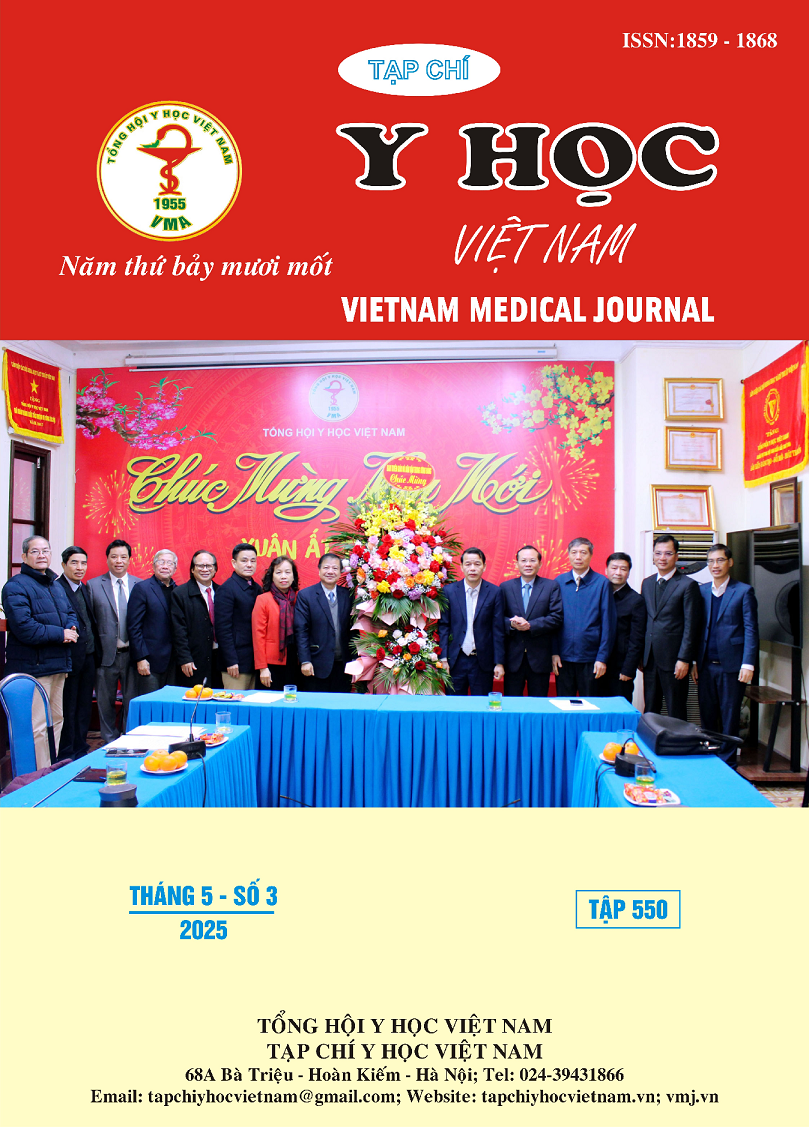CHARACTERISTICS OF PATIENTS WITH CHRONIC HEPATITIS C BEFORE TREATED WITH DAAs AT 2 TROPICAL HOSPITALS
Main Article Content
Abstract
Objective: To describe the clinical and demographic characteristics of patients with chronic hepatitis C treated with DAAs at the National Hospital for Tropical Diseases (NHTD) and the Ho Chi Minh City Hospital for Tropical Diseases (HTD). Methods: This is a randomized controlled clinical trial. Patients will be randomly assigned to two groups at a ratio of 1:1. Results: The study included 250 patients, of which the study group at the HTD and NHTD accounted for 23.2% and 26.4% of the total study subjects, respectively. The control group at the HTD and NHTD accounted for 23.6% and 26.8% of the total study subjects, respectively. The study subjects had many underlying diseases such as depression, cancer, peripheral neuropathy, angina, and COPD. Notably, patients in this study also had tuberculosis accounting for 4%, hyperlipidemia accounting for 4%, diabetes accounting for 7.5% and hypertension accounting for 11.1%. All patients participating in the study had a hemoglobin level ≧ 12 g/dl, 4.8% of patients still had platelet levels between 100-150G/l and 4.4% of patients had white blood cells below 4.5G/l. The group of patients at the HTD had a viral load ≥4 x105 UI/ml accounting for 60.7%, while this index in patients treated at the NHTD was 80.5%. Conclusion: Patients with chronic hepatitis C participating in the study were evenly distributed in the 2 hospitals and still had many underlying diseases, high viral load before treatment. Hemoglobin, platelet and white blood cell indices were still normal.
Article Details
Keywords
subclinical, hepatitis C, Tropical Hospitals
References
2. Organization WH. Global Hepatitis Report 2024.
3. Bộ Y tế. Quyết định 2065/QĐ-BYT 2021 hướng dẫn chẩn đoán điều trị bệnh viêm gan vi rút C. In: tế BY, editor. 2021.
4. Vranjkovic A, Deonarine F, Kaka S, Angel JB, Cooper CL, Crawley AM. Direct-Acting Antiviral Treatment of HCV Infection Does Not Resolve the Dysfunction of Circulating CD8(+) T-Cells in Advanced Liver Disease. Front Immunol. 2019;10: 1926-1926. doi:10.3389/fimmu. 2019.01926
5. Mohd Hanafiah K, Groeger J, Flaxman AD, Wiersma ST. Global epidemiology of hepatitis C virus infection: new estimates of age-specific antibody to HCV seroprevalence. Hepatology. Apr 2013;57(4):1333-42. doi:10.1002/hep.26141
6. Thompson KA, Blank G, Toy J, et al. Prevalence and incidence of hepatitis C infection amongst men who have sex with men in a population-based pre-exposure prophylaxis program in British Columbia, Canada. Liver Int. Jul 2022;42(7):1528-1535. doi:10.1111/liv.15237
7. Rein DB, Wittenborn JS, Smith BD, Liffmann DK, Ward JW. The cost-effectiveness, health benefits, and financial costs of new antiviral treatments for hepatitis C virus. Clin Infect Dis. Jul 15 2015;61(2):157-68. doi:10.1093/cid/civ220
8. Morozov VA, Lagaye S. Hepatitis C virus: Morphogenesis, infection and therapy. World J Hepatol. 2018;10(2): 186-212. doi:10.4254/wjh. v10.i2.186


